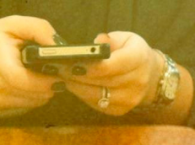A resume is still the single most important document in the hiring process, so you’ve got to get it right.
I’ve written a lot on this topic over the years – and this post is a roundup of my top tips and most impactful resume advice. I hope you find it useful!
Tip 1: Keep it to one page
In most cases, a one-page resume is much more impactful than a two-page one. As you’ve probably heard, resumes are screened insanely quickly, so less is truly more.
While some job seekers will have the experience to justify a longer resume, most of the time it’s worth getting REALLY honest with yourself and asking if that piece of information actually needs to take up real estate on the page.
I promise that a shorter, customized, and finely-tuned resume will perform much better than a laundry list, which often features blocks of text that aren’t relevant (see tip 2) that readers glaze over.
[post: Does your resume really need to be on one page?]
Tip 2: Customize it for the jobs you want
Most resumes end up in the no pile for one reason: the person’s experience isn’t right for the job. It’s not that their experience is wonderful – it’s just simply not coming across as relevant.
When you are about to send your resume out for a job you’re excited about, take the extra step of customizing it.
Highlight the experience that’s most relevant to the job by adding, deleting, rearranging, and rephrasing your bullets to align as closely as possible. Don’t lie or embellish (this is never a good idea), but do consider how to frame every bullet and accomplishment in a way that shows you’re a good fit.
Tip 3: Clarify your job titles
You want your reader to have a really good understanding of you and your job history in under six seconds. That’s a really fast skim, which is why job titles have such an important role.
If your title is vague or might be unclear to someone outside of the organization where you held the job, there are a few easy ways to fix it that don’t involve misrepresenting your role.
Lying on a resume can come back to haunt you even after you’ve landed the position. There’s a better way!
Using parentheses to provide an alternate, more recognizable title or providing a job title summary are both options when considering how to make your title pack the most punch.
[post: When your job title doesn’t tell the full story]
Tip 4: Write strong bullets, with or without metrics
The bullet points on your resume are a great opportunity to convey your work’s impact.
You have probably heard the advice that metrics and quantified results perform best on resumes. In reality, not every job is best described by using numbers, and forcing figures and numbers when they aren’t relevant can be meaningless.
For any resume, what’s most important is providing compelling details that show you are an expert at what you do. You can write really strong bullets without relying on traditional conventions, as long as you’re demonstrating what you did, how you excelled, and the impact that work had on the company.
[post: How to write resume bullets without metrics]
Tip 5: Don’t overdo the creativity
When it comes to being creative with you resume, my advice is to proceed with caution.
If you have a heavily-designed resume, it may look great on paper, but it may not be compatible with Applicant Tracking Systems (ATS). If you go this route, I suggest having an alternate, more simple version that can be parsed by these recruiting systems.
If you are thinking about doing something really out-of-the-box, like putting your resume on a billboard, printing it on a t-shirt, or folding it like origami, know that it’s a risk. It will most likely get people talking, but not necessarily in a good way.
Rather than possibly hurting your chances, spend your extra effort skill-building, networking, and making yourself stand out in the traditional way: by submitting a great (paper!) application.
[post: How creative should your resume really be?]
Tip 6: Proofread, line by line
If you notice a typo in your resume after you send it off, don’t lose sleep over it. Typos happen, and your application probably won’t be thrown out for it.
Still, it’s best to send the most polished resume you possibly can, so make sure you proofread line by line after you make edits. Pesky errors can happen every time you put your cursor in your document, so each time you make changes, read the whole thing over to scout for missing words, punctuation marks, or added characters.
It can be hard to spot your own mistakes, so put a little time between editing and writing, or even better, ask a friend to trade. Another pair of eyes is the quickest way to spot typos.
–
Good luck writing your resume and last but not least, remember that done is better than perfect! Don’t let endless tweaking get in the way of you actually moving forward with your job search. The jobs won’t wait!





